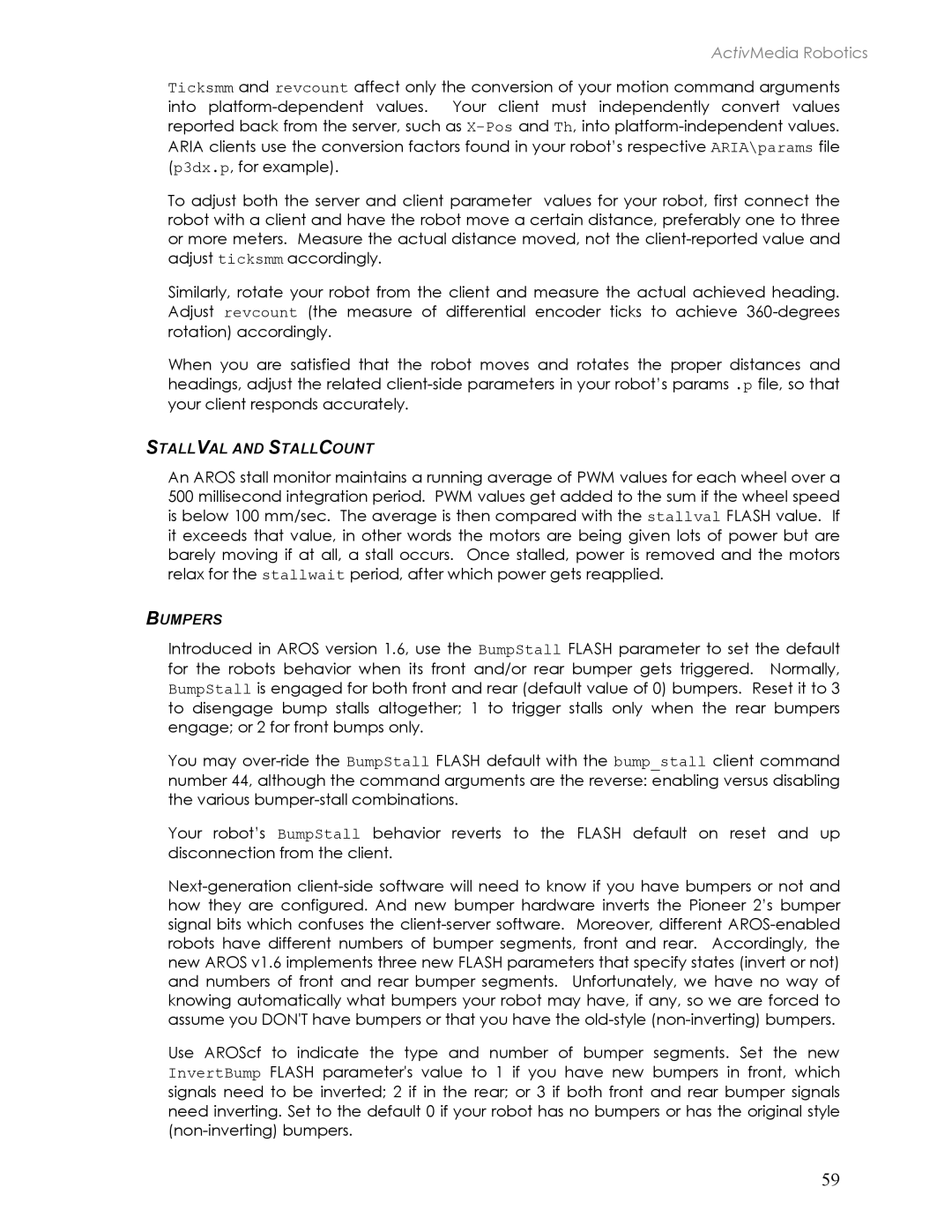ActivMedia Robotics
Ticksmm and revcount affect only the conversion of your motion command arguments into
To adjust both the server and client parameter values for your robot, first connect the robot with a client and have the robot move a certain distance, preferably one to three or more meters. Measure the actual distance moved, not the
Similarly, rotate your robot from the client and measure the actual achieved heading. Adjust revcount (the measure of differential encoder ticks to achieve
When you are satisfied that the robot moves and rotates the proper distances and headings, adjust the related
STALLVAL AND STALLCOUNT
An AROS stall monitor maintains a running average of PWM values for each wheel over a 500 millisecond integration period. PWM values get added to the sum if the wheel speed is below 100 mm/sec. The average is then compared with the stallval FLASH value. If it exceeds that value, in other words the motors are being given lots of power but are barely moving if at all, a stall occurs. Once stalled, power is removed and the motors relax for the stallwait period, after which power gets reapplied.
BUMPERS
Introduced in AROS version 1.6, use the BumpStall FLASH parameter to set the default for the robots behavior when its front and/or rear bumper gets triggered. Normally, BumpStall is engaged for both front and rear (default value of 0) bumpers. Reset it to 3 to disengage bump stalls altogether; 1 to trigger stalls only when the rear bumpers engage; or 2 for front bumps only.
You may
Your robot’s BumpStall behavior reverts to the FLASH default on reset and up disconnection from the client.
Use AROScf to indicate the type and number of bumper segments. Set the new InvertBump FLASH parameter's value to 1 if you have new bumpers in front, which signals need to be inverted; 2 if in the rear; or 3 if both front and rear bumper signals need inverting. Set to the default 0 if your robot has no bumpers or has the original style
59
